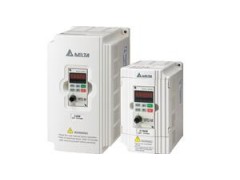How to set the parameters of Delta inverters
In general, we divide the parameters of inverter into three types. One is that it is not necessary to adjust the parameters that can be kept at the factory setting; The parameters to be preset before the test run; the third is the parameter for the demand adjustment during the test run.
After the inverter device, disconnect the output of the inverter, and then turn on the inverter power supply. (Note that the operating voltage of the inverter calibration is consistent with the external input voltage), which are recognized according to the parameter definition. The factory setting of the parameters is consistent with the operating conditions, such as the additional frequency of the motor, the input voltage, the type of the input/output signal, etc. If these signals are consistent with the operating conditions, these parameters can be set without setting the factory settings. /p>
There are some presets that need to be preset before the test run, such as: external terminal operation, analog operation, base frequency, high frequency, upper limit frequency, lower limit frequency, start time, braking time (and mode) , thermal electronic protection, overcurrent protection, carrier frequency, stall protection and overvoltage protection. Some parameters are parameters that are adjusted according to the operating conditions during the debugging process, such as operating frequency, acceleration time, and deceleration time. , 1 speed, 2 speed, 3 speed, analog output ratio adjustment, etc. In addition to the above three parameters, there are some parameters that are the display of the inverter Home, can not be set, you can view. Zhougong uses the LENZE SMD series of inverters as an example. The parameters in the parameter table are explained to me one by one, which parameters do not have to be set, and which need to be set before the output device such as the drive motor. Which ones need to be adjusted according to the operating conditions during the test run, and the power-on introduces the tips for adjusting the parameters during the test run. For example, the starting time setting principle should be short and not long, and can be set to 1.5~2s/kW. The overcurrent setting value can be increased appropriately and can be increased to 150%. If the start key *RUN is pressed, the motor is blocked. It means that the load torque is too large and the starting torque is too small. At this time, press STOP to stop immediately. The deceleration braking time setting principle is that the length should not be short. The light load starting frequency can be set greater than 0, and the heavy load general starting frequency starts from 0. The starting torque setting and the starting frequency setting are also the same, which is advantageous for the acceleration starting, especially when the light load is heavy. The starting torque value for the heavy load is large, causing the starting current to increase, and the current OC is more easily skipped in the low frequency band. The general starting torque is suitable from 0. The base frequency setting base frequency standard is 380V at 50Hz, that is, V/F=380/50=7.6, sometimes the heavy load starts badly, and when the other parameters cannot be improved, the base frequency can be adjusted. That is, the 50Hz set value is decreased, and can be reduced to 30 Hz or below. At this time, V/F > 7.6, that is, the output voltage is increased at the same frequency, especially at a low frequency band (ie, torque ∝ U2). There are three types of braking methods: energy braking is available at operating frequency > 20Hz; DC braking is suitable for precise parking or parking, and can be used in combination with energy braking, generally ≤ 20Hz; feedback The brake is applicable to ≥100kW, the speed regulation ratio is D≥10, the high and low speed alternate or positive and negative alternate, and the cycle time is also short. In this case, the feedback brake is applied, and the feedback power can reach 20% of the motor power. For pumps and fans, the load should be free to brake. When implementing fast and strong braking (such as DC braking), it is easy to produce a serious "water hammer" effect. In the process of load debugging, in order to protect the inverter and load equipment, the setting of the working frequency should be gradually increased, and pay attention to the operation of the load. The following conditions must be stopped immediately: the motor does not move, the motor overheats. The inverter displays abnormal faults multiple times and should disconnect the load check: 1 Whether the input voltage is normal, 2 confirm the set value again (especially for the part related to the start); 3 output device and the output side of the inverter


